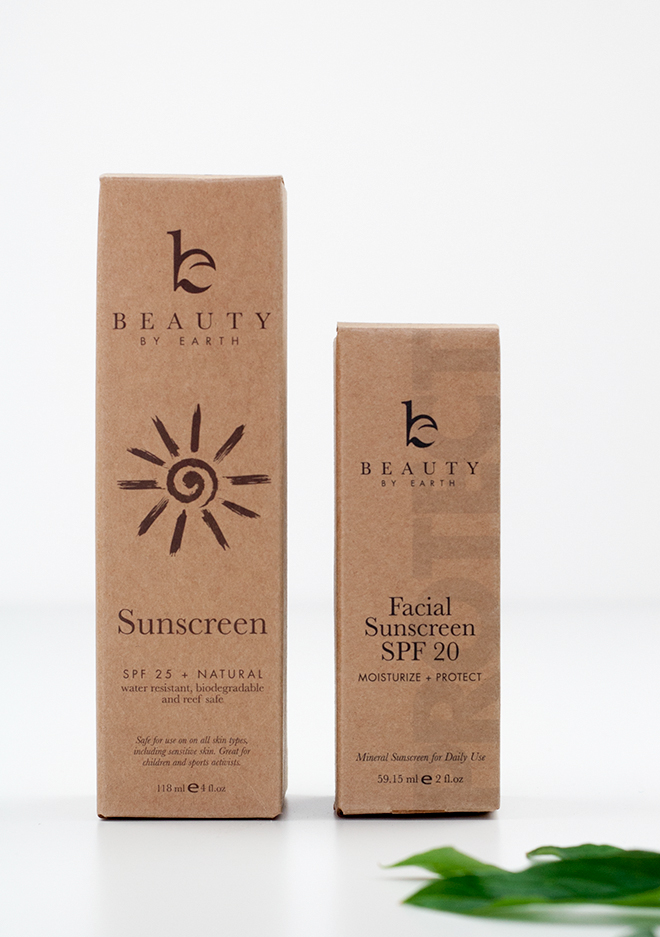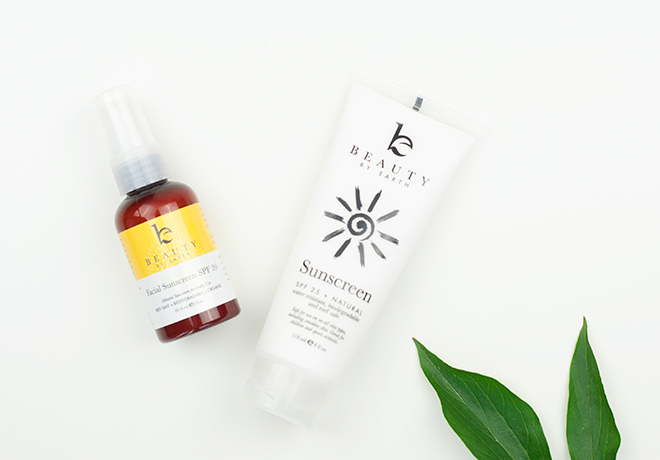The most common myth is that the higher SPF you use, the more protected you are. It appears many people still believe it’s true and pass on this misinformation further to others. First of all, take a look at this table, showing how much UVB rays sunscreen absorbs depending on its SPF level. Not only SPF50 blocks just 1.6% more UVB than SPF30, but I’ll tell you why this myth can get you in serious trouble. It depends on your skin type (you can determine it here using Fitzpatrick scale), weather conditions, and your location how long your skin can be exposed to sun without sunscreen before getting burnt. Sunscreen extends that time by absorbing (chemical filters) or scattering (physical filters) UV rays and that way protecting the skin. In other words, if you use a sunscreen with SPF10, you can be in the sun 10 times longer without getting burnt. So, if you use a sunscreen with SPF50, you can be in the sun 50 times longer. Sounds amazing, right? Well, not really. Sunscreens (especially those with physical filters) tend to rub off easily when you sweat or after contact with clothing, so knowing that you’ve applied high SPF sunscreen, you get a false illusion that your skin is protected, while in reality the most sensitive places, like your face, your shoulders, or thighs, can get really burnt. You wouldn’t believe how often this happens to so many people and then they blame the sunscreen, when actually it was them who didn’t know how to use it properly. I’m not trying to discourage you from using sunscreen with SPF50, it’s your choice, but just keep in mind that it’s not the higher SPF that matters, but how often you reapply your sun protection.
I’m not going to speak about cancer risks or hormonal disruptions, because the data is just too controversial. To be honest, I don’t find posts like this easy to write, because I don’t want to sound preachy. However, I think this topic is particularly important and such information (with verified facts) should be available and widely spread. Knowledge is power and the best we can do is to educate ourselves by reading trusted sources and make up our minds as we go. That’s why I also wanted to share some really great articles regarding this topic from the sources I trust:
CDC: Americans Carry Body Burden Of Toxic Sunscreen Chemical by EWG
The Chemistry Of Sunscreen: Organic vs. Non Organic by The Scientific Parent
Physical vs. Chemical Sunscreen by Skinacea
The Great Sunscreen Coverup by Science Based Medicine
The Trouble with Sunscreen Chemicals by EWG
What’s Wrong With High SPF by EWG
Scientific research:
Concentrations of the Sunscreen Agent Benzophenone-3 in Residents of the United States: National Health and Nutrition Examination Survey 2003–2004
Safety of Oxybenzone: Putting Numbers Into Perspective
Facial Sunscreen SPF20* (59ml)
This might sound strange to some of you, but I have never owned a facial sunscreen before. I just never sunbathe, also, I use mineral foundations with SPF for my face, so the only sunscreen I need is for my body. I had no idea what to expect, but it turned out it’s a great product. Mainly, because of these three reasons: this facial sunscreen comes in a travel-friendly spray bottle, it has a pleasant gentle scent, and it rubs on clear and matte. The word “matte” to me somehow equals “drying”, but since the sunscreen contains so many nourishing and regenerating ingredients, it’s far from drying, but light enough to be suitable for oilier skin types.
It’s best for using it during the hottest times of summer or when on vacation to tropic or high-altitude destinations. Also, it’s a nice addition to a daily skincare routine if your usual day cream or foundation doesn’t contain SPF (I’m tempted to get ILIA Vivid Foundation, which I think doesn’t have SPF, so I’m considering using this facial sunscreen underneath).
Facial Sunscreen SPF20 goes for $16.99/£13 for 59ml.
Water-resistant Sunscreen SPF20* (118ml)
Made with only natural moisturizing ingredients, this sunscreen is something I enjoy using. It has a sweet scent, which reminds me of vanilla. This sunscreen comes out of the tube white, very thick, and creamy, but it rubs on the skin completely clear. However, you have to rub it hard to make it completely sink it. But once it does, it doesn’t leave any greasiness or white cast.
Now that it’s summer, this compact 118ml tube is always with me in my handbag. I’m a little sad that it is over the size allowed for traveling with a carry-on baggage, but it’s still a sunscreen that I would recommend.
Water-resistant Sunscreen SPF20 goes for $14.99/£12 for 118ml.
Which sunscreens are your current favorites? Let me know in the comments!





As natural sunscreen I recommend Concentrated Shea Butter.
Thanks for the post! I appreciate it. I knew about the SPF hoax, but I’ve never been able to find a sunscreen that doesn’t dry out my skin. Do higher-end sunscreens do more to moisturize skin? The only thing that’s worked for me lately has been using sunscreen in addition to raw shea butter, but if a product like the one above will moisturize, then I think it’s definitely worth the price. Thoughts?
Thank you!!
Lisa